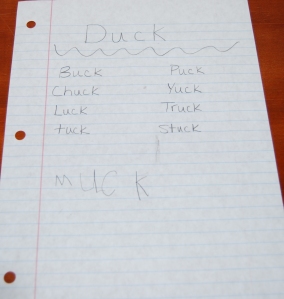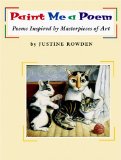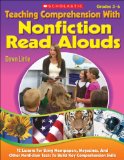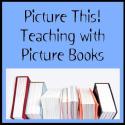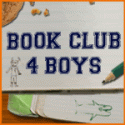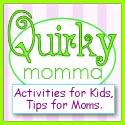I am honored to share with you my first Author Q & A on Literacy Toolbox.
Pam Allyn’s Best Books for Boys: How to Engage Boys in Reading in Ways That Will Change Their Lives (Scholastic 2011)
(Scholastic 2011)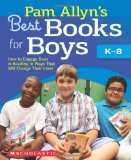 is a new resource for educators, but I think parents can certainly glean useful information from it in terms of ways to encourage reading in boys. I will review the book here on Thursday! In the meantime, read what Pam has to say about literacy and boys.
is a new resource for educators, but I think parents can certainly glean useful information from it in terms of ways to encourage reading in boys. I will review the book here on Thursday! In the meantime, read what Pam has to say about literacy and boys.
- Please tell Literacy Toolboox readers a little about yourself. What was your impetus to begin Lit Life and Lit World?
I HAVE LOVED WORDS AND STORIES FOR AS LONG AS I CAN REMEMBER. MY PARENTS’ VOICES READING ALOUD TO ME AND THE NEARNESS OF THEM ARE AMONG MY VERY FIRST MEMORIES. WHEN I BECAME A TEACHER I SAW OVER AND OVER HOW FOR THE MOST MARGINALIZED CHILDREN, BOOKS AND STORIES BRING THEM INTO COMMUNITY AND LOVE AND CONNECTEDNESS. MY FAMILY IS A FAMILY OF TEACHERS. MY GRANDMOTHERS WERE BOTH TEACHERS, AND I GREW UP WITH A SENSE OF THE POWER AND MAGIC OF TEACHING, AND WHAT AN HONORABLE PROFESSION IT TRULY IS. I FOUNDED LITLIFE TO PROVIDE TEACHERS WITH THE CRUCIAL SUPPORT THEY NEED TO BE THE STRONGEST THEY CAN BE. THERE’S A LOT OF TALK ABOUT EFFECTIVE TEACHING, BUT I THINK YOU CANNOT BE AN EFFECTIVE TEACHER UNLESS YOU FALL IN LOVE WITH BOTH THE CRAFT AND SKILL OF TEACHING AND THE CHILDREN THEMSELVES. I FOUNDED LITWORLD IN 2007 AFTER MY WORK WAS RECOGNIZED INTERNATIONALLY AND I HAD THE OPPORTUNITY TO TRAVEL TO KENYA AND LIBERIA AND SEE FIRSTHAND THE SUFFERING OF CHILDREN WHO ARE DEPRIVED OF EDUCATION, AND MOST PARTICULARLY, OF LITERACY. I BELIEVE LITERACY IS A HUMAN RIGHT, NOW SO MORE THAN EVER BEFORE, GIVING US ACCESS TO HEALTH, INFORMATION AND INSPIRATION. ALL CHILDREN DESERVE THIS RIGHT.
- Who are your literacy mentors in the professional field? Why?
MY LITERACY MENTORS INCLUDE BARRY LANE, JIM BURKE, NAOMI SHIHAB NYE AND GEORGIA HEARD. THEY ARE ALL PEOPLE WHO STAY TRUE TO THE INNER LIVES AND DIGNITY OF CHILDREN AND TEENS NO MATTER WHAT THE LATEST TRENDS ARE OR THE PRESSURE BEING PUT ON SCHOOLS. THEIR WORK STAYS TRUE BLUE TO THEIR CALLING AND IT IS MIRACULOUS WORK: BOTH USEFUL AND PRACTICAL BUT ALSO POETIC AND MAGICAL AT THE SAME TIME. A VERY RARE COMBINATION. I AM ALWAYS GRATEFUL TO LUCY CALKINS FOR TURNING THE LIGHT ON FOR ME WHEN I WAS A GRADUATE STUDENT AND LATER CAME TO WORK WITH HER AT A TIME IN NEW YORK CITY WHEN THE TEACHING OF WRITING WAS MORE THAN A PRACTICE, IT WAS A MISSION. THOSE WERE VERY EXCITING TIMES, AND I WAS SO GLAD TO BE A PART OF THEM. FINALLY, THE GREATEST TEACHER OF ALL WAS PAOLO FREIRE. HE BELIEVED IN THE PERSONAL STORY AS THE CRUX OF ALL LEARNING AND THE TOOL THAT WOULD MAKE IT POSSIBLE FOR EVERYONE TO LEARN TO READ AND WRITE. HE IS ALWAYS WITH ME, AND AS A RESULT THE POWER OF THE STORY IS WHAT FUELS MY WORK EVERY DAY.
- Who are a few of your favorite authors of children’s literature?
I SO LOVE CHARLOTTE ZOLOTOW, WALTER DEAN MYERS, CARMEN AGRA DEEDY, LANGSTON HUGHES, MO WILLEMS, LAUREN CHILD AND NIKKI GIOVANNI.
- Which one children’s book has had the most influence on you and why?
CHARLOTTE’S WEB IS THE PERFECT BOOK, BECAUSE IT IS NOT JUST FOR CHILDREN. IT IS FOR ALL OF US. IT IS ABOUT COURAGE AND LONELINESS, SORROW AND JOY. AND ALL OF THAT ABOUT A PIG! IT IS A MIRACULOUS BOOK IN EVERY WAY, FROM THE BIG IDEAS TO THE TINIEST GRAMMATICAL POINT. IT IS A MASTERPIECE. BUT BEYOND ALL THAT IS THE FACT THAT THE CENTER OF THE BOOK IS FERN, A TEN YEAR OLD GIRL WHO WATCHES AND LISTENS CAREFULLY AND VALUES FRIENDSHIP AND THE HUMAN HEART. HE NAILED IT.
- In the last several years, much has been written about the differences in learning between boys and girls. How has this influenced your work with boys?
I DO BELIEVE THAT WE HAVE NOT CREATED CLASSROOMS THAT ARE SANCTUARIES FOR ALL KINDS OF LEARNERS AND BOYS REALLY SUFFER IN THAT. THE MAIN MESSAGE SEEMS TO BE: SIT QUIETLY, CONFORM TO EXPECTATIONS, BE OBEDIENT. THESE ARE NOT GOOD MESSAGES FOR EITHER GENDER, ESPECIALLY IN AN ERA WHEN WE ALL SHOULD BE ENCOURAGING BOYS AND GIRLS TO BE INNOVATORS AND THINK OUTSIDE THE BOX. I AM CONCERNED ABOUT THE RESULTS FOR BOYS AT THE END OF HIGH SCHOOL AND HOW MANY MORE BOYS END UP IN PRISON AND LACK LITERACY SKILLS THAN GIRLS. IT IS A REAL CRISIS HERE IN THE UNITED STATES. IN MY WORK WITH BOYS, FIRST AND FOREMOST I WANT THEM TO FEEL A PART OF A READING COMMUNITY AND TO VALUE WHAT THEY READ AND HOW THEY READ, EVEN IF IT’S NOT INSIDE A CHAPTER BOOK WITH A MEDAL ON IT.
- Are there any misconceptions society may have about boy readers?
WE THINK BOYS DON’T LIKE TO READ WHEN IN FACT MANY OF OUR BOYS ARE READING CONSTANTLY! THEY MIGHT BE READING VIDEO MANUALS, OR TEXTS, OR INTERNET SITES AND NOT THE AGE OLD CHAPTER BOOK SO WHAT WE DO IS WE VALUE THE BOY LESS AS A READER. I WANT TO CHANGE THAT. IT’S ALL READING.
- Which children’s book character (or type of character) do boys typically connect with? Why?
BOYS TEND TO (AND I DON’T WANT TO GENERALIZE WHICH IS WHY I SAY, TEND) LIKE CHARACTERS LIKE THEMSELVES; BOYS! THEY LIKE BOYS WHO MAKE MISTAKES, WHO ARE HUMAN BUT ALSO DO SOME VERY COOL THINGS. THAT’S WHY HARRY POTTER IS AN INSPIRATION. HE’S A PLAIN OLD BOY WITH A SCAR ON HIS FOREHEAD BUT HE FINDS MAGIC ANYWAY.
- What advice can you give to parents of boys to encourage them to read?
MODEL YOURSELF AS A READER TOO! PUT DOWN YOUR DISTRACTIONS AND CREATE TIME FOR READING TOGETHER AT HOME. IF WE ARE TELLING OUR KIDS TO READ BUT SPEND ALL OUR TIME FLITTING FROM ONE CELL PHONE TO THE NEXT, WE ARE NOT SENDING THE MESSAGE OUR BOYS WILL UNDERSTAND. SIT DOWN TOGETHER. BE READERS TOGETHER.
- What five books would you recommend for boys between 4-8?
DON’T LET THE PIGEON DRIVE THE BUS, MO WILLEMS
FLAT STANLEY, JEFF BROWN
THE ODIOUS OGRE, NORMAN JUSTER
TRUE STORY OF THE THREE LITTLE PIGS, JON SCIEZKA
CLICK, CLACK, MOO BY DOREEN CRONIN
- What suggestions do you have for parents to help their sons maintain their reading over the summer?
PARENTS MUST BE POSITIVE ABOUT THEIR SONS AS READERS. KNOW YOUR SONS AND BRING THEM BOOKS OR FIND BOOKS WITH THEM THAT REFLECT THEIR PASSIONS. BE A READER TOGETHER WITH YOUR SONS. EXPAND YOUR VIEW ABOUT WHAT MAKES A GOOD READER AND DON’T BE JUDGMENTAL. IF THEY LIKE TO READ CEREAL BOXES, COMPLIMENT THEM AS READERS! HAVE FUN!
Pam Allyn began her career as a teacher. She is now the Executive Director of LitWorld. She is also the Executive Director of LitLife, a nationwide education professional development consultancy. Pam has written several books for teachers including the curriculum development guide entitled “The Complete 4 for Literacy” (Scholastic 2007) and one for parents, caregivers and educators entitled “What to Read When” (Penguin 2009).
©2011 by Dawn Little for Literacy Toolbox. All Amazon links are affiliate links and may result in my receiving a small commission. This is at no additional cost to you.
 directions and complete them. Procedural reading is an important type of reading that as adults we probably do seamlessly, but children need practice learning both the purpose of procedural reading as well as understanding how to read that particular type of text.
directions and complete them. Procedural reading is an important type of reading that as adults we probably do seamlessly, but children need practice learning both the purpose of procedural reading as well as understanding how to read that particular type of text. 
 question at this point. How do we get boys to read as much as girls? Why is there a disparity between boys and girls in reading? In the second section, she provides the reader with 24 questions and answers related to reading and boys, such as: How can we make boys comfortable with reading? Does online reading count? How can I celebrate and affirm boys’ achievements in reading? Allyn ends with an extensive annotated list of books that boys may enjoy. She explains a coding system – labeling books with E-for Emergent Readers, D – for Developing Readers, and M – for Maturing Readers – that has more to do with a boy’s emotional development rather than his chronological age. Books are listed by genre – genres that boys typically like.
question at this point. How do we get boys to read as much as girls? Why is there a disparity between boys and girls in reading? In the second section, she provides the reader with 24 questions and answers related to reading and boys, such as: How can we make boys comfortable with reading? Does online reading count? How can I celebrate and affirm boys’ achievements in reading? Allyn ends with an extensive annotated list of books that boys may enjoy. She explains a coding system – labeling books with E-for Emergent Readers, D – for Developing Readers, and M – for Maturing Readers – that has more to do with a boy’s emotional development rather than his chronological age. Books are listed by genre – genres that boys typically like.
 You know me. . . I’m always looking for the teachable moment in a book! This book does not fail!
You know me. . . I’m always looking for the teachable moment in a book! This book does not fail! 